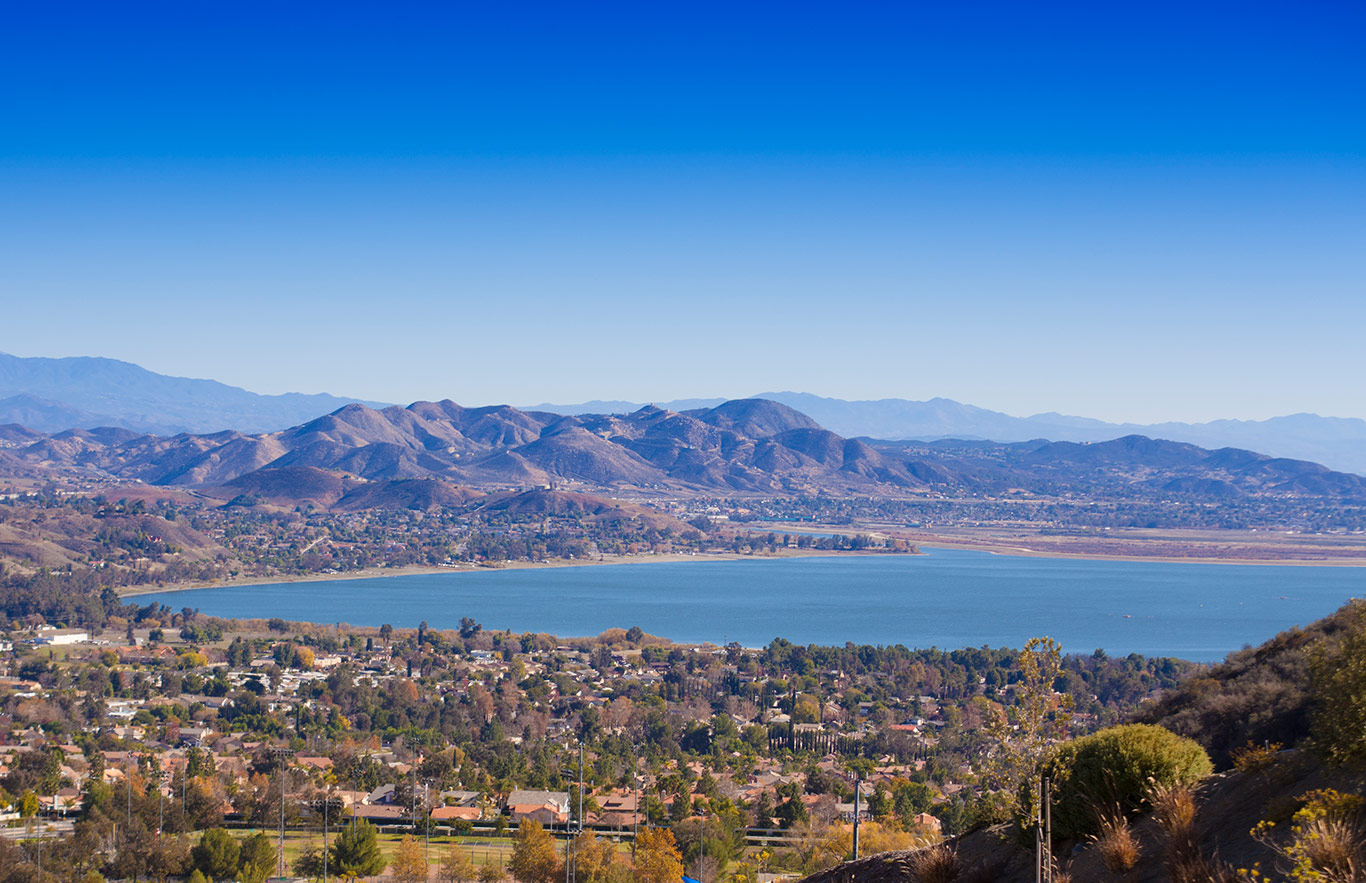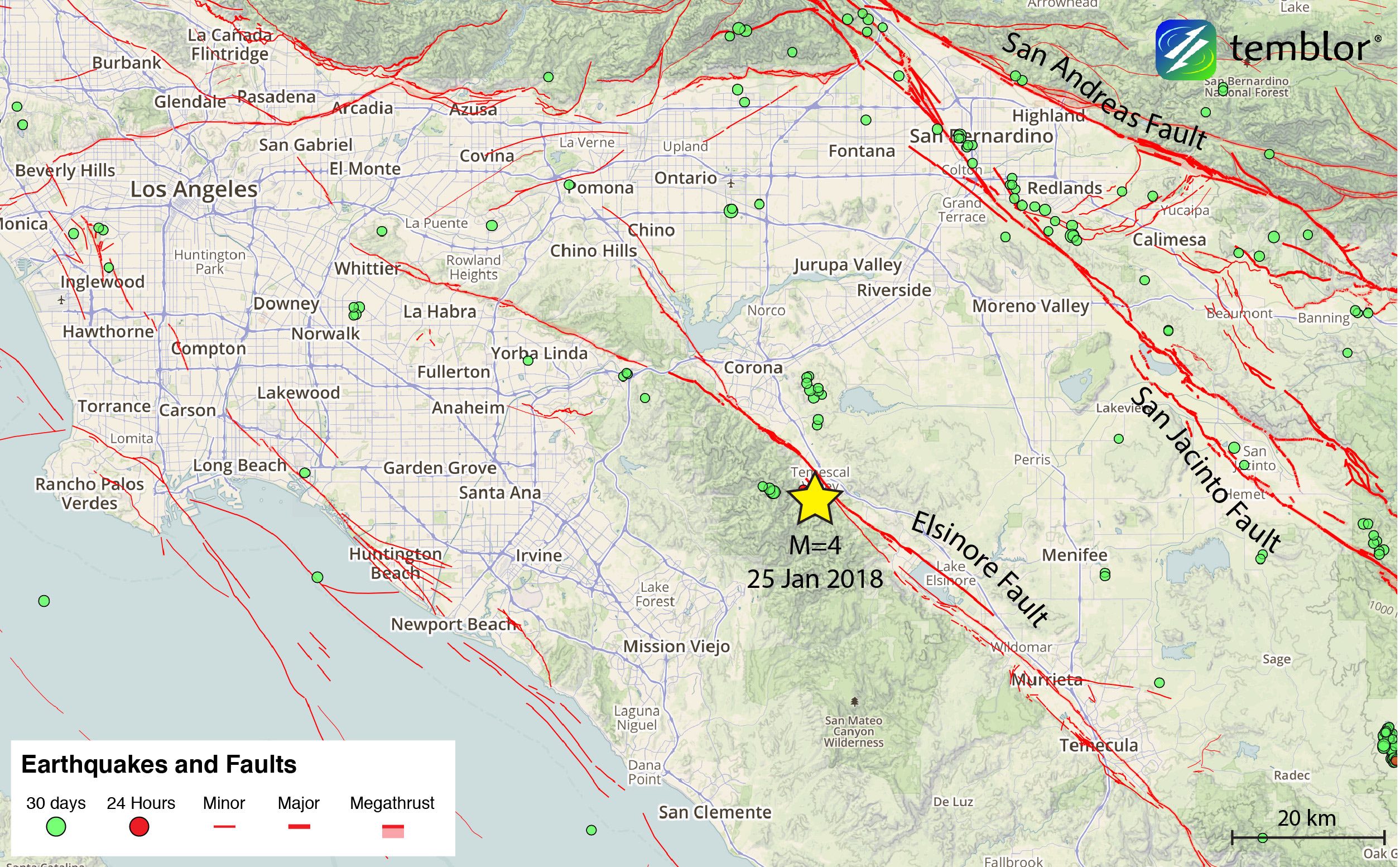By David Jacobson, Temblor

Last night, at 2:09 a.m. a M=4 earthquake struck Southern California approximately 25 km southwest of Riverside. The quake occurred at a depth of 11 km, and was felt widely across the region, registering over 11,000 felt reports on the USGS website. Based on the focal mechanism produced by the USGS, this quake was primarily compressional in nature, with some strike-slip motion, and close to the Elsinore Fault. Earthquakes with this focal mechanism are not uncommon here. However, this event did not occur on the main strand of the Elsinore Fault, but rather a small secondary fault. Because of the relatively small magnitude of this earthquake, no damage has been reported or is expected. However, it did wake tens of thousands of people in Southern California. Additionally, Dr. Craig Nicholson, Research Geophysicist at the Marine Science Institute of U.C. Santa Barbara, told Temblor, “There has been a persistent cluster of ‘off-fault’ earthquakes in this area for quite some time. The Elsinore fault is certainly multi-stranded, but here there has been sustained seismicity west of the fault zone and west of the southern end of the Whittier fault. These earthquakes could be related to low-angle blind faults similar to the Peralta Hills fault located farther north.”

Even though this earthquake did not occur on the main strand of the Elsinore Fault, because of its proximity, it does give us a chance to highlight one of Southern California’s largest faults. Just by itself, and not including its northern and southern extensions, the Elsinore Fault extends for approximately 180 km through Southern California. However, despite its size, it is one of the quietest faults in the region. Most recently, it ruptured in 1910 in a M=6 earthquake. That event was not particularly damaging though, it did topple some chimneys in nearby communities. Other than that earthquake, there are no major historic quakes along the Elsinore Fault.
The Elsinore Fault: A sleeping giant
Just because a large earthquake has not happened historically does not mean a damaging event could not occur. In the USGS scenario catalog, they show that should the Elsinore rupture from end to end, a M=7.8 could be generated. Such an event would be devastating for the region and could cause damage from San Diego to Los Angeles.
While a M=7.8 earthquake may not be the most likely scenario, by using the Global Earthquake Acitivity Rate (GEAR) model, we can see what is likely in your lifetime. This model uses global strain rates and the last 40 years of seismicity to estimate the likely earthquake magnitude in your lifetime anywhere on earth. From the figure below, one can see that in the location of this morning’s event, a M=6.5+ is likely. While such an event would not have as large an impact on all of Southern California, it could be devastating to places like Riverside and Mission Viejo.

References
USGS
Southern California Earthquake Data Center
LA Times
Hull, Alan and Nicholson, Craig, Seismotectonics of the Northern Elsinore fault zone, Southern California, Bulletin of the Seismological Society of America 82(2) · January 1992
- Beware quiet segments of the Philippine Fault - May 16, 2025
-
ډیری عوامل افغاني ټولنې د زلزلې پر وړاندې زیانمنوي
- August 11, 2022 - What’s happening this week in Humboldt County, California: The squeeze - February 6, 2019
